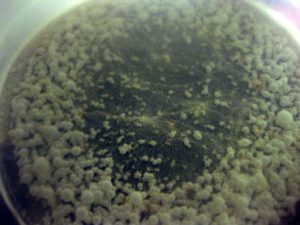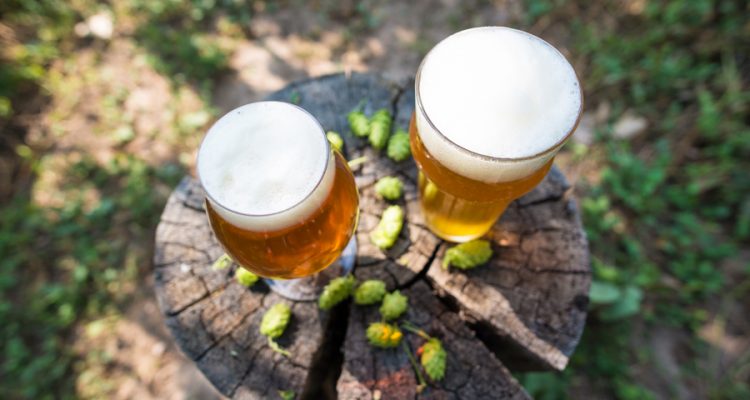If you ask beer enthusiasts about hot new beer trends, many will tell you that sour beers are the current rising stars. Once obscure beer styles from Belgium, and to a lesser extent Germany, sours have experienced a resurgence in Europe and have literally exploded onto the American craft beer scene.

Age soured beer or Kettle soured beer?
I tasted by first sour beer in 1988 in Belgium. I had read about them in the airline magazine on my way to Brussels and decided to seek them out. But when I ordered one at the bar in my hotel, the bartender refused to sell it to me. “Americans don’t like Lambic beers,” he said. “You will like this one better,” pointing to the Stella Artois tap. It took some persistence to finally get him to pour me a Lambic, amid grumblings of “You won’t like it.” How wrong he was. It was unlike anything I had ever had – tart and refreshing with layers of complexity. I was in love!
So, as a long-time lover of sour beers, I am particularly pleased to see my favorite beers finally getting the recognition they deserve all these years later. American craft brewers not only brew the classic styles, but have taken the art of sour beers to a whole level – a level that is uniquely our own.
The Great Sour Divide
There is, however, one big drawback to making sour beers. It would be a gross understatement to say that sour beers – in the classic sense – take a long time to develop their unique and complex flavors and aromas. How long? Long as in two to three years! It’s hard for a brewery to wait that long for any beer to come around, and waiting is only one of the challenges involved in fermenting beer with wild yeasts and bacteria.
To get around the long waiting time, many breweries have borrowed a souring technique originally used by German brewers of Berliner Weisse and Gose. The technique is known as “kettle souring,” and it can cut the two to three year wait down to a matter of weeks. Sound good? Well, there are some trade-offs.
So, in today’s sour beer market, there are two distinct camps – age souring and kettle souring. It’s the Great Sour Divide.
Age Souring
Age souring, or culture souring, is the classic Belgian method of souring beer – the one that takes years. This method involves inoculating the beer (by a variety of procedures) with wild yeasts like Brettanomyces and beneficial bacteria like lactobacillus and pediococcus.

Sour beer aging in oak foudres at New Belgium
Long after initial fermentation has died down, these microorganisms slowly eat away at any nutrients remaining in the beer and produce the tart and earthy flavors you find in Belgian Lambics and Flanders ales. It is this long, slow fermentation that produces the incomparable complexity these beers are known for.
Kettle Souring
Kettle souring is the traditional method for souring German Berliner Weisse and Gose. It involves introducing lactobacillus bacteria into the freshly mashed wort (raw beer) in the brew kettle, waiting for 24 to 48 hours or more for the wort to sour, and then boiling the wort – which kills off the bacteria in the now-soured beer.

Souring beer in the kettle
Kettle souring produces a lactic tartness in the finished beer, without the range of complex flavors typical of an aged-soured beer. This process, though, produces a tart beer in as little as a week, as opposed to months and years.
Which is the better souring method?
Personally, I prefer age-soured beers to kettle-soured ones. I find them to be far more complex and interesting than kettle sours, and lack the harsh lactic acit character found in many kettle sours.
Because age-soured beers often benefit from the flavors and aromas imparted by a collection of microorganisms, they take on a rich complexity that can be earthy with notes of leather, wood, horse blanket and herbs. The tartness produced by multiple bacteria strains is more complex than is possible with only one strain.
Kettle sours get their tartness from the lactic acid produced by the lactobacillus bacteria, so they often come across as one-dimensional – lacking complexity. If the lactic acid is overdone (I have had many examples where this was the case), it can come across as biting and harsh.
Are there any good kettle sours?
I used to be pretty down on kettle sours, referring to them as “lazy man’s sours.” I had quite a few bad ones early on that were hard to get through. There are still a lot of poor examples out there, and they are not usually identified as kettle-soured beers on their packaging – so buyer beware.
That said, I have recently tasted some much better examples of kettle sours. In the hands of a skilled brewer, they can be quite nice. For example, Gose is traditionally kettle soured and there are many fine examples of this style made in America today. If the brewer keeps the souring light, he or she can avoid the harshness that comes from over-souring. Beers with a natural sweetness or fruit-infused beers lend themselves to kettle souring, which can actually enhance these flavors. The secret is balance, which is the hallmark of a well-brewed beer.
Are there disadvantages to age-souring?
In addition to the time it takes an age-soured beer to mature, there are several challenges to age-souring. Many breweries that cannot wait years for the beer to reach its peak will release it early. If you drink these beers right away, they may lack the complexity and depth of flavor they should have. In this case, you may want to lay the beer down for further aging so that the flavors can develop.
Because microorganisms are by nature unpredictable, age-soured beers often require blending to achieve the desired flavor profile. Because these microorganisms are alive, they can infect “clean” areas of a brewery – especially if they are being aged in porous barrels. Thus, brewers need to isolate barrel-aged sour beers in a separate area of the brewery or off-site. All of this adds to the overall costs of the beer. Many of these costs can be avoided through kettle-souring.
Age-soured or Kettle-soured?
As I stated earlier, I still prefer age-soured beers. But, they can be costly, hard to find, and often require additional cellaring. I think they are well worth it.
Well-made kettle sours can also be quite good, and they are typically less expensive, ready to drink now, and often feature fruits and other ingredients that are enhanced by lactic tartness.
I believe there is a place for both types of sour beers in the marketplace. Taste around and choose the ones you like best.




Leave a Reply